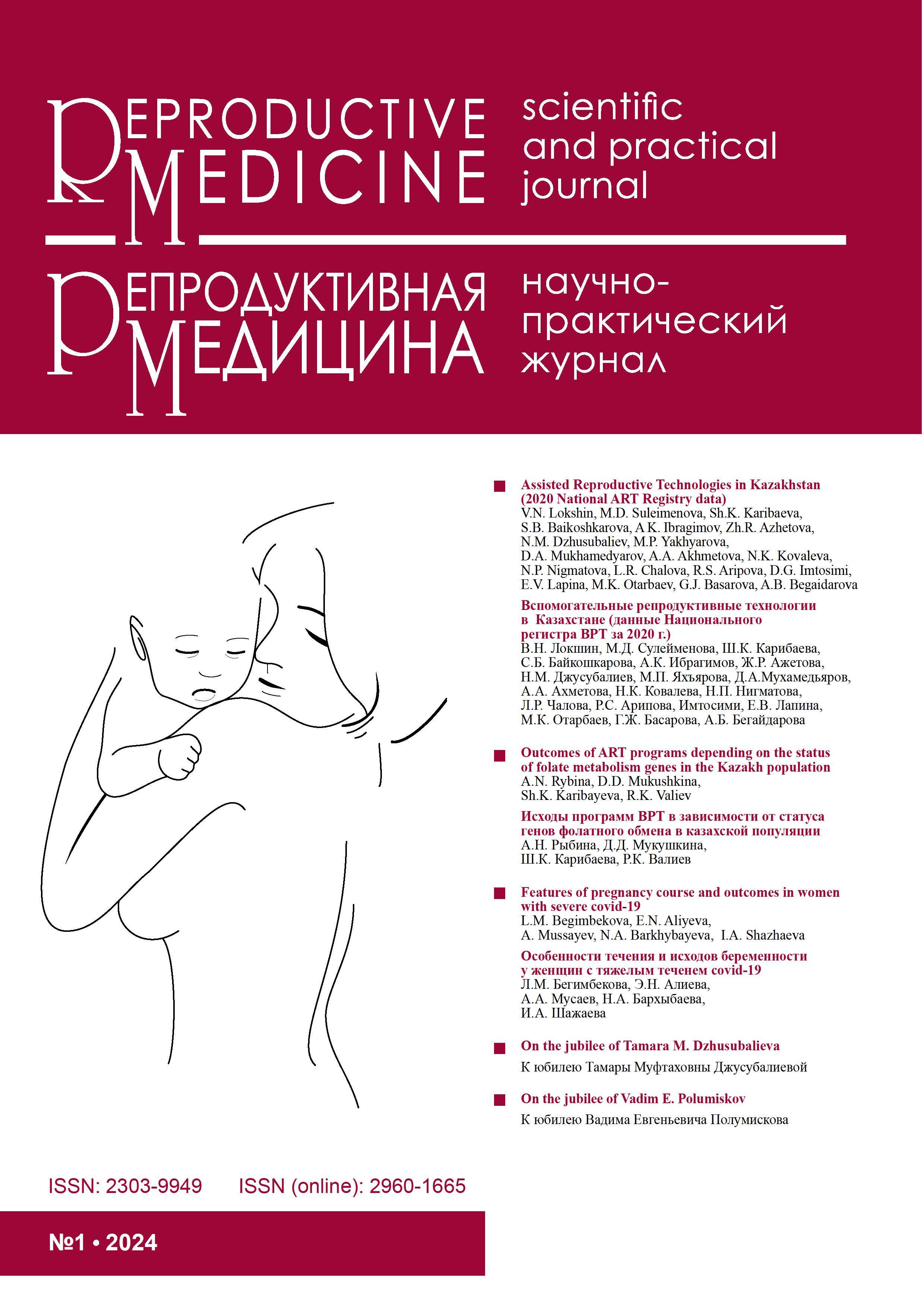Using the CyberPatient™ platform to develop practical skills for international students
DOI:
https://doi.org/10.37800/RM.1.2024.158-165Keywords:
CyberPatient™, online education, innovation training, medical educationAbstract
Relevance: One of the first practical steps medical students can learn is conducting a medical interview. Virtual reality can provide students with a suitable virtual clinical environment for learning and practicing anamnesis collection skills using reliable, standardized, cost-effective online tools. In their meta-analysis, many researchers concluded that virtual patients effectively improve students’ clinical judgment ability on specific topics.
The study aimed to assess the impact of using the CyberPatient™ platform on improving the skills of collecting medical history from international students. It then identified improvements in the practical skills of prescribing and conducting diagnostic measures and practical prognostic diagnosis.
Materials and methods: To achieve this goal, the CyberPatient™ platform was used at the Department of Obstetrics and Gynecology as part of a practical lesson for students from abroad (group 02-19) in the specialty ‘General Medicine’ in the subject ‘Gynecology.’ The lesson topics were ‘Endometriosis,’ ‘Menopausal syndrome,’ and ‘Inflammatory diseases of the female genital organs.’ CyberPatient presents ready-made scenarios created on an online platform using specially animated avatars to simulate patients in real life.
Results: The high efficiency of CyberPatient™ technology is due to its ability to address didactic tasks effectively: it allows for creating an individual educational trajectory, taking into account different initial levels of student competence, visually presents educational information, and models a professional task. It also enables objective monitoring of learning results and quick feedback, identifies errors, and facilitates self-control and self-correction, thereby enhancing the motivational aspect of training. The scoring system encourages thoroughness and accuracy: students score 100 points for completing a stage independently without assistance. If, according to the assessment sheet, the student does not score the required score, scores less than 50 points, or does not pass one of the stages, he must re-pass the entire stage, indicating that he did not fulfill this criterion.
Conclusion: CyberPatient™ software is an effective teaching method that can be successfully used to develop clinical reasoning and clinical decision-making skills. Given the positive results, medical schools can widely use CyberPatient™ technologies in educational activities.
However, developing ways to integrate this simulation technology into existing training programs is necessary to obtain high-quality results.
References
Courteille O, Fahlstedt M, Ho J, Hedman L, Fors U, Von Holst H, Felländer-Tsai L, Möller H. Learning through a Virtual Patient vs. Recorded Lecture: A Comparison of Knowledge Retention in a Trauma Case. Int J Med Educ. 2018;9:86-92.
https://doi.org/10.5116/ijme.5aa3.ccf2
Berman NB, Durning SJ, Fischer MR, Huwendiek S, Triola MM. The Role for Virtual Patients in the Future of Medical Education. Acad Med. 2016;91:1217-1222.
https://doi.org/10.1097/ACM.0000000000001146
Keifenheim KE, Teufel M, Ip J, Speiser N, Leehr EJ, Zipfel S, Herrmann-Werner A. Teaching History Taking to Medical Students: A Systematic Review. BMC Med Educ. 2015;15:159.
https://doi.org/10.1186/s12909-015-0443-x
Huang G, Reynolds R, Candler C. Virtual Patient Simulation at U.S. and Canadian Medical Schools. Academic Medicine. 2007;82:446-451.
https://doi.org/10.1097/ACM.0b013e31803e8a0a
Danforth DR, Procter M, Chen R, Johnson M, Heller R. Development of Virtual Patient Simulations for Medical Education. Journal for Virtual Worlds Research. 2009;2;4-11.
https://doi.org/10.4101/jvwr.v2i2.707
Consorti F, Mancuso R, Nocioni M, Piccol A. Efficacy of Virtual Patients in Medical Education: A Meta-Analysis of Randomized Studies. Computers and Education. 2012;59:1001-1008.
https://doi.org/10.1016/j.compedu.2012.04.017
Vash JH, Yunesian M, Shariati M, Keshvari A, Harirchi I. Virtual Patients in Undergraduate Surgery Education: A Randomized Controlled Study. ANZ Journal of Surgery. 2007;77:54-59.
https://doi.org/10.1111/j.1445-2197.2006.03978.x
Kandasamy T, Fung K. Interactive internet-based cases for undergraduate otolaryngology education. Otolaryngology – Head and Neck Surgery. 2009;140:398-402.
https://doi.org/10.1016/j.otohns.2008.11.033
Gynecology. Syllabus. 2023;1:23.
https://base.ukgfa.kz/?wpfb_dl=28114
Kira EF, Sinchikhin SP, Stepanyan LV. The basic questions of oncogynecology Moscow: GEOTAR-media; 2018;288. ISBN: 978-5-9704-4565-5.
https://litra.studentochka.ru/book?id=145079752
Radsinskiy VE, Fuks AM, Gagaev ChG. Gynaecology. Moscow: GEOTAR-Media; 2020. – P. 896.
https://www.geotar.ru/lots/NF0017679.html
Farahmand S, Meneghetti A, Shi K, Pachev G, Ramezani J, Zeinoddini S, Mehrnoush V, Hosseinzadeh Sh, Kapur H, Qayumi AK. CyberPatient™ – An Innovative Approach to Medical Education. Creat Educ. 2020;11:926-941.
https://www.scirp.org/journal/ce
Cleland JA, Abe K, Rethans JJ. Using simulated patients in medical education: AMEE Guide No. 42. Medical Teacher. 2009;31:477-486.
https://doi.org/10.1080/01421590903002821
Haist SA, Griffith CH, Hoellein AR, Talente G, Montgomery T, Wilson JF. Improving Students’ Sexual History Inquiry and HIV Counseling with an Interactive Workshop Using Standardized Patients. Journal of General Internal Medicine. 2004;19:549-553.
https://doi.org/10.1111/j.1525-1497.2004.30204.x
Halbach JL, Sullivan LL. Teaching Medical Students about Medical Errors and Patient Safety: Evaluation of a Required Curriculum. Academic Medicine Journal of the Association of American Medical Colleges. 2005;80:600-606.
https://doi.org/10.1097/00001888-200506000-00016
Berman NB, Durning SJ, Fischer MR, Huwendiek S, Triola MM. The Role for Virtual Patients in the Future of Medical Education. Academic Medicine. 2016;91:1217-1222.
https://doi.org/10.1097/ACM.0000000000001146
Fall LH, Berman NB, Smith S, White CB, Woodhead JC, Olson AL. Multi-Institutional Development and Utilization of a Computer-Assisted Learning Program for the Pediatrics Clerkship: The CLIPP Project. Academic Medicine. 2005;80:847-855.
https://doi.org/10.1097/00001888-200509000-00012
Courteille O, Fahlstedt M, Ho J, Hedman L, Fors U, Von Holst H, Felländer-Tsai L, Möller H. Learning through a Virtual Patient vs. Recorded Lecture: A Comparison of Knowledge Retention in a Trauma Case. International Journal of Medical Education. 2018;9:86-92.
https://doi.org/10.5116/ijme.5aa3.ccf2
Qayumi AK, Kurihara Y, Imai M, Pachev G, Seo H, Hoshino Y, Cheifetz R, Matsuura K, Momoi M, Saleem M, Lara-Guerra H, Miki Y, Kariya Y. Comparison of Computer-Assisted Instruction (CAI) versus Traditional Textbook Methods for Training in Abdominal Examination (Japanese Experience). Medical Education. 2004;38:1080-1088.
Downloads
Published
How to Cite
Issue
Section
License
Copyright (c) 2024 The rights to a manuscript accepted for publication are transferred to the Journal Publisher. When reprinting all or part of the material, the author must refer to the primary publication in this journal.

This work is licensed under a Creative Commons Attribution-NonCommercial-NoDerivatives 4.0 International License.
The articles published in this Journal are licensed under the CC BY-NC-ND 4.0 (Creative Commons Attribution – Non-Commercial – No Derivatives 4.0 International) license, which provides for their non-commercial use only. Under this license, users have the right to copy and distribute the material in copyright but are not permitted to modify or use it for commercial purposes. Full details on the licensing are available at https://creativecommons.org/licenses/by-nc-nd/4.0/.





